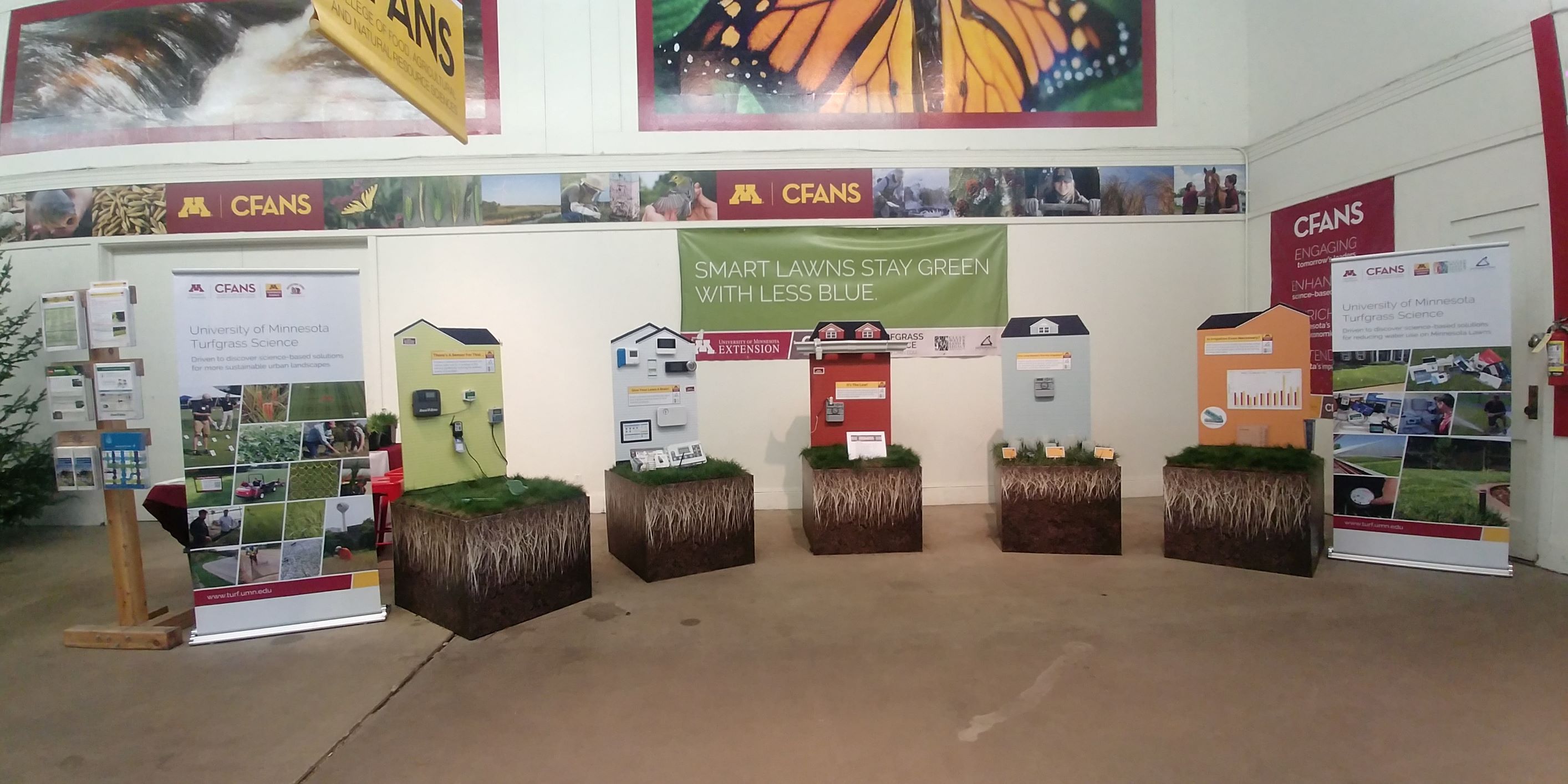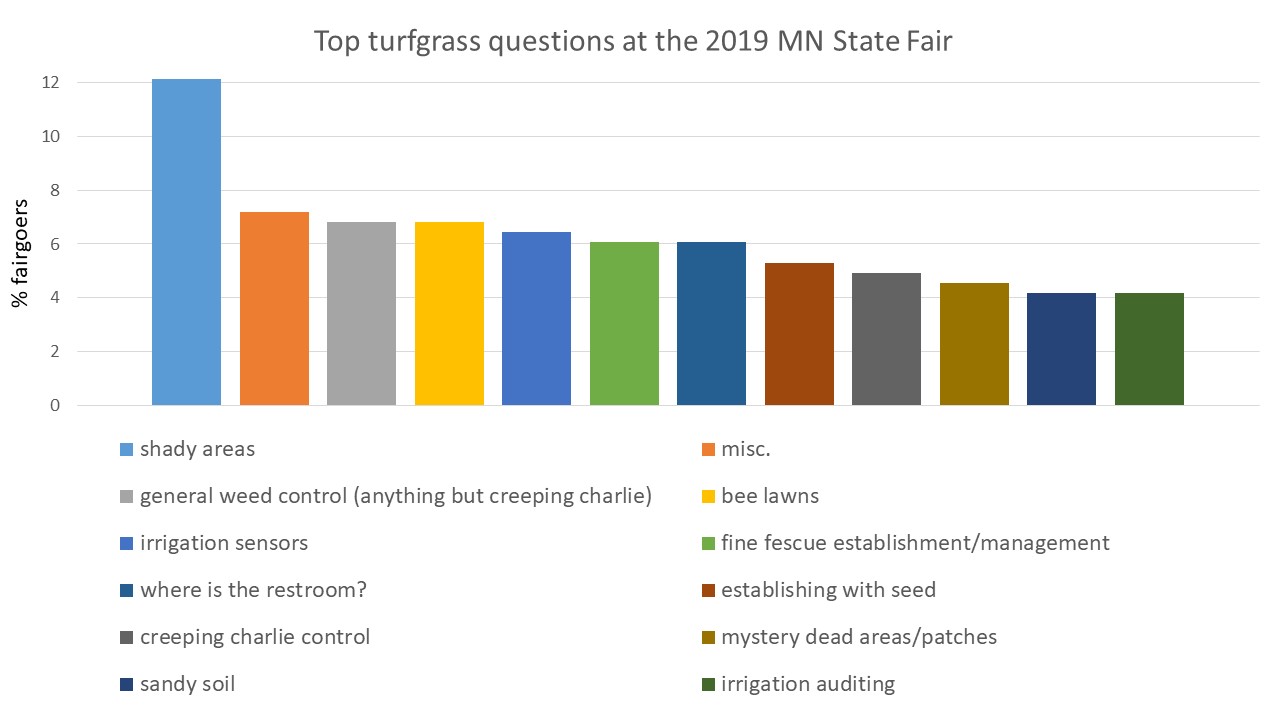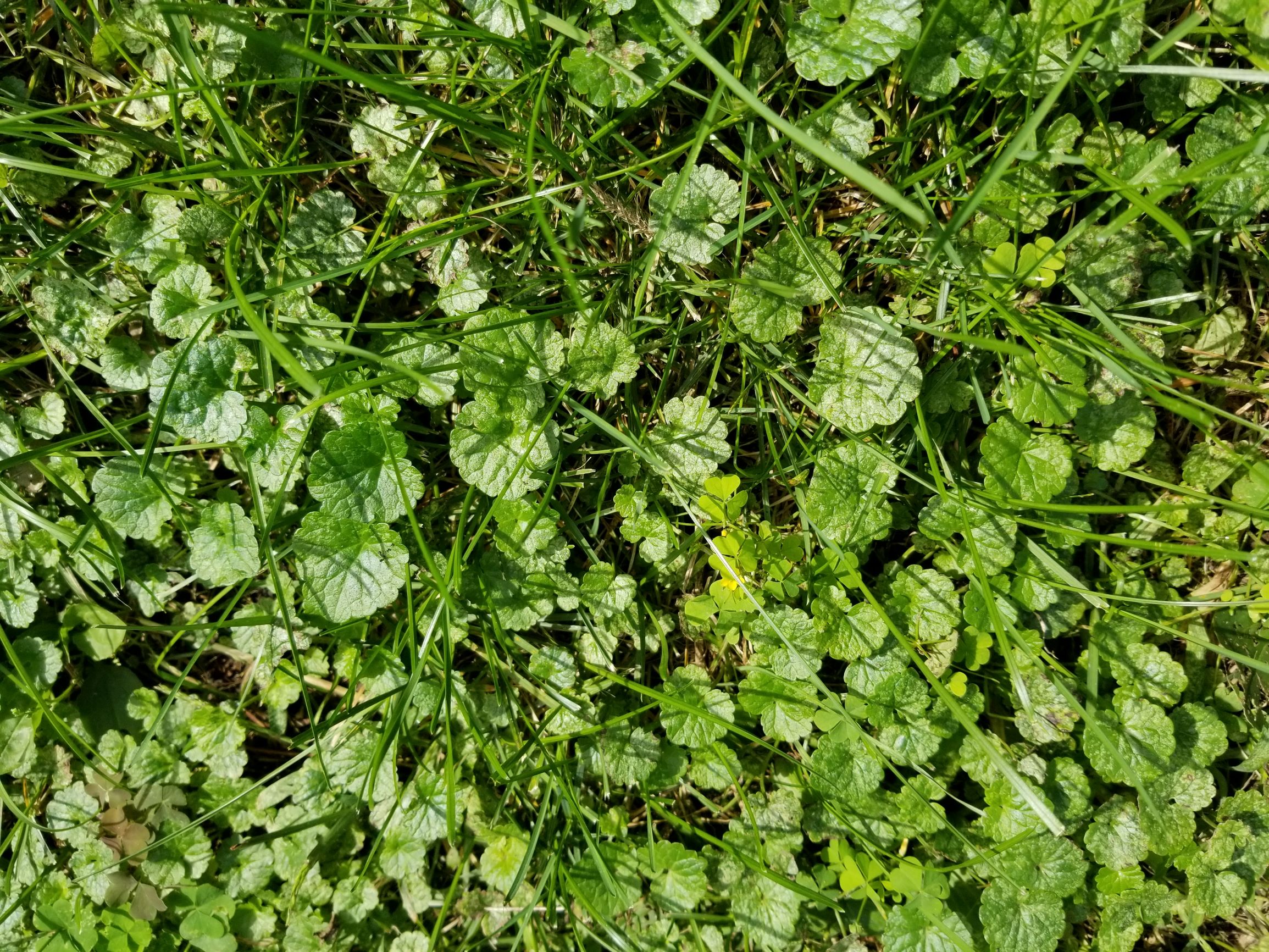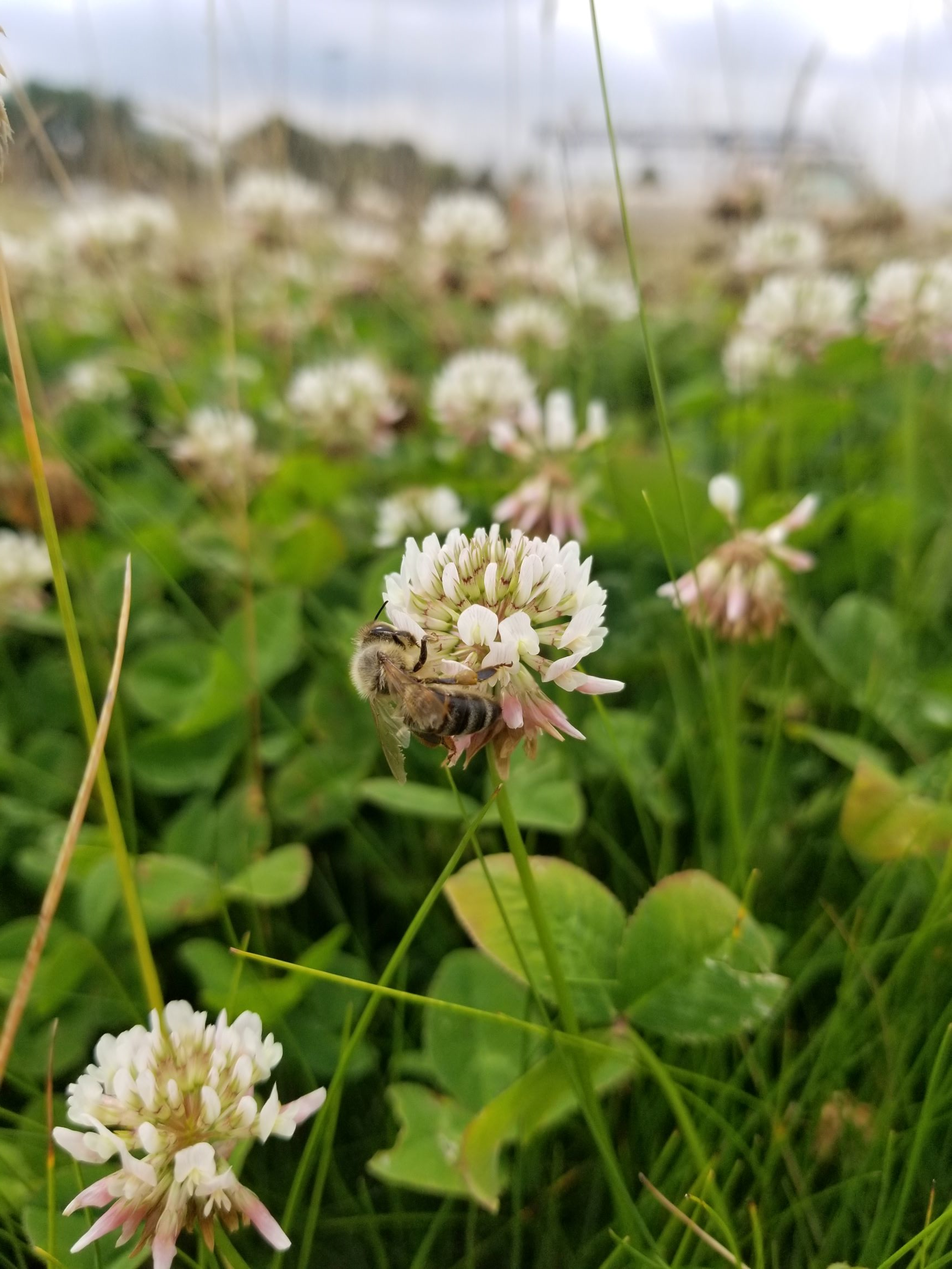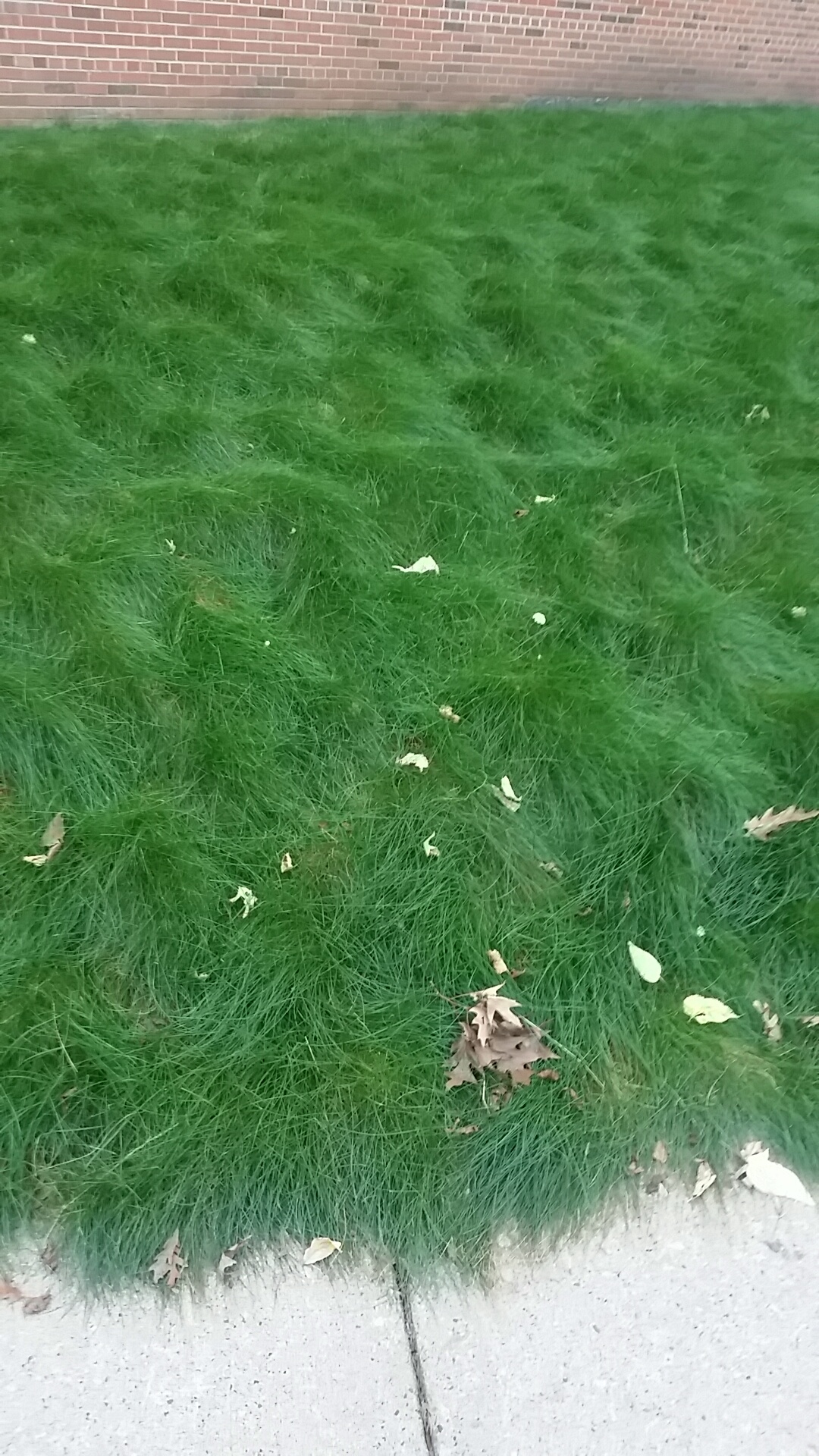Every year the UMN Turfgrass Science program has housed an outreach-education booth in the Agriculture/Horticulture Building during the Great Minnesota Get-Together (Figure 1). It is a fun way for us to take a break from the ongoing summer research and interact with our fellow Minnesotans and folks from all over the region.
Since 2017, the theme of our educational exhibit has been reducing water use on lawns in the Twin Cities Metro area, and this specific outreach effort is being supported by the Metropolitan Council. We utilize a holistic approach to water conservation by promoting the use of low-input turfgrass species, emphasizing the importance of sprinkler system auditing, increasing awareness about state regulations for landscape irrigation, and featuring new and improved smart irrigation technologies. We also enjoy answering homeowners’ questions about their lawn and learning about their individual lawn preferences. We use this outreach opportunity to teach the public about best management practices for their lawns, including proper turfgrass selection, effective fertilizing and aeration, and weed or pest control strategies, all of which can influence the water requirements of the lawn. Overall, this message of water conservation has had a positive reception in the discussions we’ve had with homeowners.
Each year we tend to receive similar questions from homeowners, and I decided to tally these up throughout the 2019 fair to get a better idea of what Minnesotans are wondering about or struggling with the most (Figure 2). In doing so, I would like to share the top 5 topics that were most frequently asked this year at the Minnesota State Fair:
1. Growing and maintaining turf in shady areas
Questions about growing and maintaining turf in shaded areas were the most popular inquiries I’ve received. Fairgoers commonly asked what turfgrass species to plant in shade. Grass species that tolerated shade best in MN are the fine fescues and turf-type tall fescue. These species can often be found in shady grass seed mixes, and they will grow well in sunny areas too. The fine fescues can be a little tricky because they include 5 different turfgrass species, but there is information on our website regarding which fine fescue you should use for sunny and shaded areas. If traffic in shaded areas is a problem, give turf-type tall fescue a try. When purchasing seed, ensure the seed label list one or more of these species.
Fairgoers also asked why their grass is declining in shaded areas. Lawns can decline for many reasons. Thinning out in shade, however, can be attributed to the use of less shade-tolerant species like Kentucky bluegrass or perennial ryegrass. Furthermore, improper mowing and irrigation practices can also contribute to poor lawn performance under shade. In the shade, the lawn likely stays wet longer, so lay off the irrigation and adjust your program to water those zones less frequently; overwatering can be more severe than under-watering. Additionally, simply raising the mowing height in the shaded areas may help the grass be more competitive.
2. General weed control practices
A large portion of fairgoers had questions about weed identification and control. Regular lawn practices such as properly mowing, fertilizing, and irrigating can provide a thick, healthy lawn which reduces weed pressure. However, improper lawn practices, such as overwatering, can actually increase weed competition. Weeds that were most commonly asked about this year were creeping Charlie (Figure 3), creeping bentgrass, and crabgrass. To avoid repetition check this link for descriptions and control options of common landscape weeds. As a friendly reminder, a weed is technically defined as a plant growing out-of-place, and so what is and isn’t considered a weed varies from homeowner to homeowner.
3. Establishing and maintaining bee lawns
Four years ago, question about bee lawns would not have made this list. Our research and outreach efforts with the UMN Department of Entomology and Bee Lab on pollinator lawns are creating a lot of buzz, and the word is out. Bee lawns are here to stay for those who want a low-maintenance ground cover that supports pollinators (Figure 4). Fairgoers were curious about what a bee lawn is, how to establish one, what grasses and flowering species to use, and how to manage it. The answers to these questions and a whole lot more information can be found at the UMN Bee Lawn webpage.
4. Using irrigation sensors
The past 3 years we’ve had various irrigation sensors on display at our booth that have led to a variety of interactions. The most recognizable sensor was the rain sensor. Many homeowners claimed they have a rain sensor, but do not know if it works. Rain sensors can be useful, but they tend to be inefficient in terms of matching the water requirements of the lawn, and they also need to be replaced or repaired over a relatively short period of time. As an alternative, and upgrade to rain sensors, I try to direct homeowners toward installing a soil moisture sensor. The grass responds to the amount of water available in the soil, not the amount that fell from the sky. Ultimately, having a sufficient amount of available water in the rootzone, where a soil moisture sensor is installed, is most important from an irrigation efficiency standpoint. Additionally, research has shown that soil moisture sensors save significantly more water than rain sensors without reducing the lawn quality.
Fairgoers were also inquiring how these sensors connect to their existing irrigation system. Soil moisture sensors are available as add-on devices to the more widely-used irrigation controllers today. These controllers will usually have sensor ports where sensor wiring can be connected. Typically, there’s also information and user-manuals available online from the manufacturer to help with sensor-controller decisions.
Additional information on improved irrigation system technologies such as irrigation sensors and smart controllers can be found here.
5. Establishing and maintaining a fine fescue lawn
I did not expect to find this topic in the top 5, but here we are. It shows that our ongoing work on low-input grasses is reaching the ears of the public in our surrounding region. Very few fairgoers knew the term “fine fescue” four years ago, and now they are asking about how to establish or maintain a fine fescue or no-mow lawn. Establishing fine fescues by seed in the fall is ideal. Keeping the soil moist, but puddle-free during the first 20-30 days will help with germination, which will begin about a week after seeding. The management questions were mostly about no-mow fine fescue lawns (Figure 5). To make things confusing, I recommend mowing in the fall to reduce winter injury. No-mow lawns can also be mowed in the spring after seed heads have emerged to remove them for the remainder of the year, which gives the lawn a wavy-meadow look. Although, some homeowners will leave the seed heads because they enjoy the color contrast in their landscape.
Overall, our team of graduate students, post docs, research scientists, and faculty members have always had a great time at the MN State Fair representing the program, the University of Minnesota, and connections with fairgoers. There is more information about lawns on the University of Minnesota Extension website. It has been remarkable to hear topics like bee lawns and fine fescues more and more over the years. I believe this is a reflection of our hard work as turfgrass researchers continuing to strive for more economic and ecological green spaces. We would like to thank the Metropolitan Council for their support and involvement with our research and outreach efforts
See you all at the fair next year!
